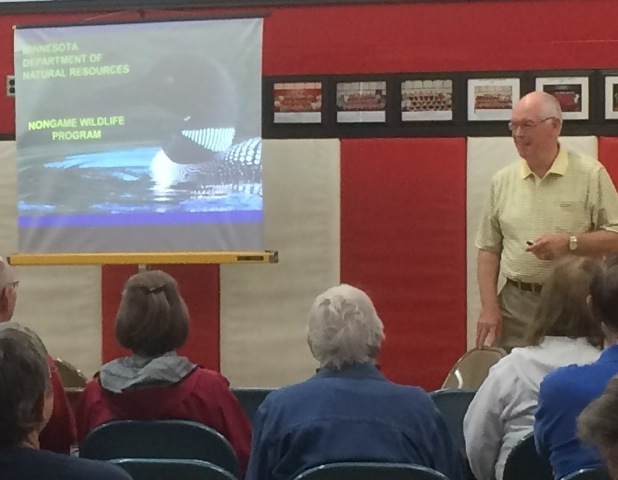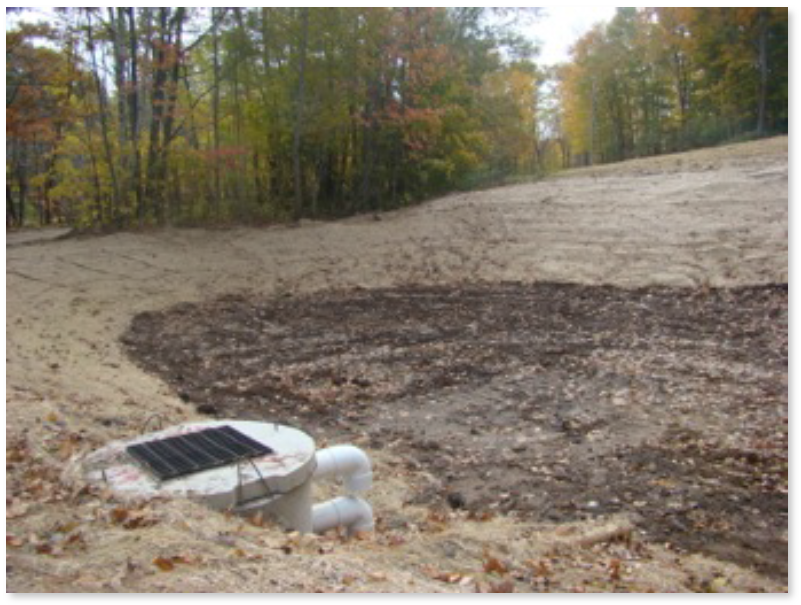Did you notice the DNR on Lone Lake last week? During the period June 15 through June 18, DNR representatives were on Lone Lake conducting a fish survey. This survey was made up of 9 gill nettings and 9 trap nettings in various locations around the lake. Although the official results will be published later this year, local DNR representative Rick Bruesewitz sat down with me for an early (and unofficial) look at what they found.
First, a few facts about our lake…
Lone Lake has a total water area of 448 acres. The littoral area (or that area near shore where sunlight penetrates all the way to the sediment and allows aquatic plants to grow; or that area around the lake which is 15’ or less deep) is 148 acres. That’s about 33% of the entire lake. The maximum depth is 60’ and there are 5.64 miles of shoreline around the lake. The fetch (or the longest unbroken stretch of open water on the lake) is 1.67 miles on a 270 degree orientation. The latest DNR water clarity reading (using a Secchi disk) was 15’ on June 15. (Lake resident Dave Scott regularly evaluates clarity and he reports that it has been as deep as 30’+ at times. Early June brought some warm weather and with it….algae bloom…which reduces water clarity for a period of time.)
Two important ingredients for healthy fish populations are water temperatures (see chart on this page) and dissolved oxygen. Dissolved oxygen was (as Rick put it “like a trout lake”) 7.7 parts per million on the surface and 5.0 parts per million at 45’ deep. This is an excellent rating for any lake.
Now for the fish survey results (unofficial at this time) and what trends they may suggest. The DNR has conducted fish surveys on Lone Lake every five years since 1949.
There are 13 categories of fish registered in the survey. These include Black Bullhead, Black Crappie, Bluegill, Bowfin (Dogfish), Brown Bullhead, Hybrid Sunfish, Largemouth Bass, Northern Pike, Pumpkinseed, Rock Bass, Walleye, White Sucker, and Yellow Bullhead. While all of these fish are important to a healthy and balanced lake ecosystem, I’m going to focus my comments on the fish almost everyone is interested in – Crappie, Panfish (Hybrid Sunfish, Green Sunfish, Pumpkinseed and Bluegill), Largemouth Bass, Northern Pike and Walleye.
Black Crappie – The number of fish netted remains relatively consistent over the entire period 1949 til now. For the 2015 survey, the size ranges from 6” – 11” with the mean length being 7.41” and a mean weight of .41 lbs. Of the 18 nettings in 2015, the DNR caught 25 Black Crappies.
Panfish – Lone Lake is definitely a panfish lake! The number of fish netted has remained stable when compared to previous surveys in the last 10 years but has taken a significant drop from the 80’s and 90’s. In 2015 198 fish were captured in both types of nettings with almost 90% of the fish taken via trap nets in shoreline waters 8’ or less. The size ranges from 4” – 8” with the mean length being 5.76” and a mean weight of…well, we don’t weigh our panfish, we just eat them!
Largemouth Bass – The number of fish netted remains stable when measured against previous surveys. The size ranges from 8”– 16” with the mean length being 12.53” and a mean weight of almost a pound. Between the 18 nettings in 2015, 12 fish were taken.
Northern Pike – The number of fish netted continue a downward trend when compared to previous surveys in the 80’s and 90’s. The size ranges widely vary from 12” to 25” with a few in the 30+” ranges. According to DNR staff, it would appear that Lone Lake is getting fewer, but larger, Northern Pike. Between the 18 nettings in 2015, 73 Northern Pike were taken, keeping this species a prevalent fish in Lone Lake.
Walleye – The number of fish netted are relatively stable when compared to previous surveys in the last 20 years but down from the 80’s and 90’s. The size ranges from 12” – 22” with the mean length being almost 19” for the deeper nets and 14” for the shallower nets. Mean weights varied from 1.01 lbs. in trap nets (shoreline) to 2.44 lbs. in gill nets (deeper water). Between the 18 nettings, 11 Walleyes were caught.
The graph below illustrates survey data for these particular fish species since 1949.














